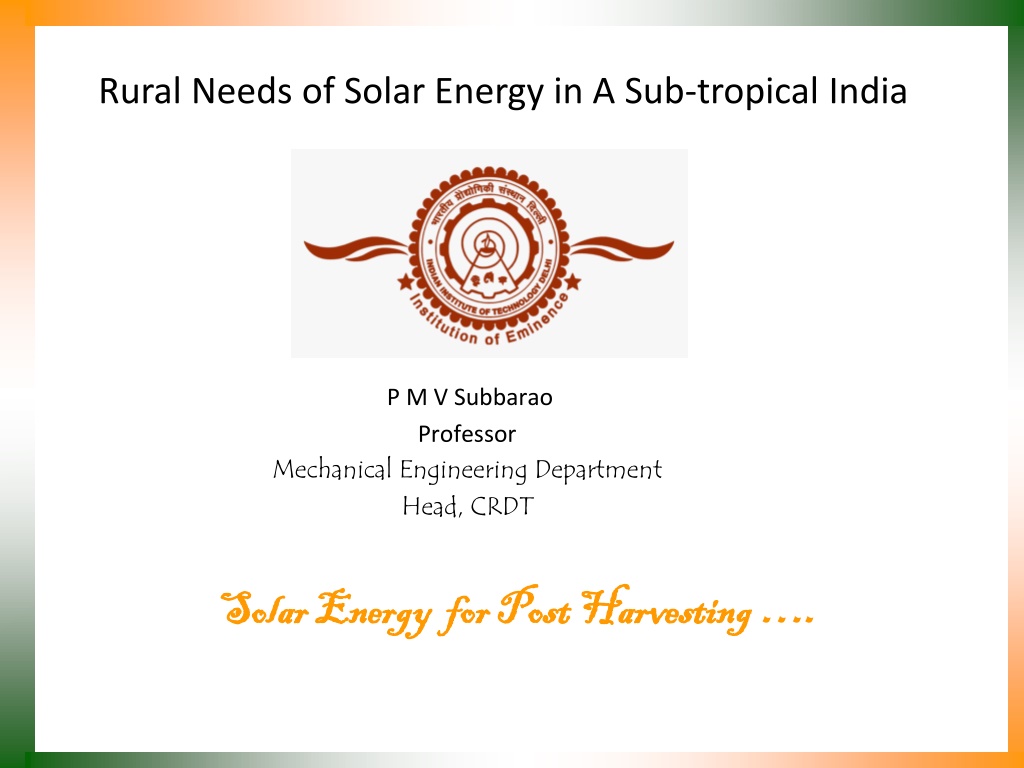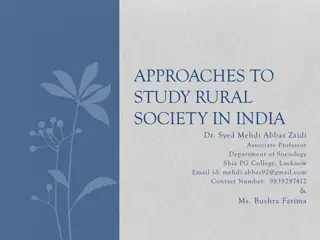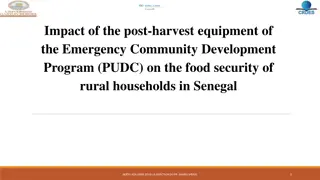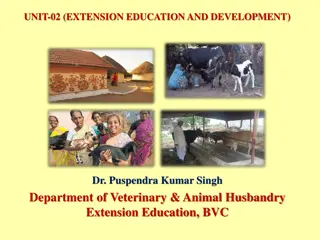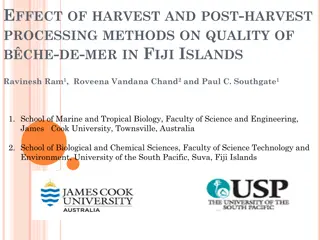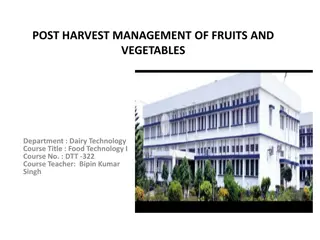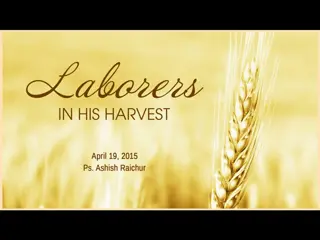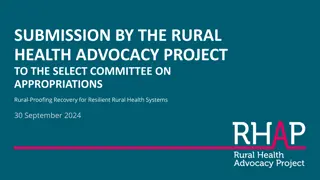Sustainable Post-Harvest Practices in Rural India
In a sub-tropical region of India, the need for solar energy in agricultural practices, particularly post-harvest management of fruits and vegetables, is highlighted. Emphasis is placed on minimizing post-harvest losses through proper handling, transportation, and storage techniques. Various aspects such as maturity indices, post-harvest processing operations, and mechanisms of drying are discussed, with a focus on utilizing local energy systems for sustainable agricultural practices.
Download Presentation

Please find below an Image/Link to download the presentation.
The content on the website is provided AS IS for your information and personal use only. It may not be sold, licensed, or shared on other websites without obtaining consent from the author. Download presentation by click this link. If you encounter any issues during the download, it is possible that the publisher has removed the file from their server.
E N D
Presentation Transcript
Rural Needs of Solar Energy in A Sub-tropical India P M V Subbarao Professor Mechanical Engineering Department Head, CRDT Harvesting . Solar Energy for Post Solar Energy for Post Harvesting
Post Harvest Management of Fruits and Vegetables Fruits and vegetables, fresh or processed, form an important component of rural economy. These are an essential component in human diet. There is an ever-increasing demand for these. India being the top producer of both fruits and vegetables in the world, more emphasis is needed to minimize post harvest losses. At present about 70-80% of our production goes waste mainly during transportation and storage. A clear understanding of biochemical and physiological changes in fruits and vegetables during post harvest operations is first step to develop sustainable systems. Persons involved in handling, transportation and storage operation must be trained to understand critical parameters and use of local energy systems.
Maturity of Harvesting Products must be at a stage which will allow it to be at its peak condition when it reaches the consumer. Should be at a maturity that allows it to develop as acceptable flavour or appearance. Should be at a size required by the market. Should not be toxic. Should have an adequate shelf-life. Maturity indices: Quantitative Indices: Average weight per piece, fullness of finger, total soluble solids, sugar to acid ratio Qualitative Indices: Colour, Available Calories, and period after blooming.
POST HARVEST PROCESSING Storage of Fruits and Vegetables Evaporative cooling and storage Controlled and modified atmosphere storage Post Harvest Preliminary Processing Operations Sorting and grading Washing Size Reduction Blanching Ripening Canning Freezing Drying
Mechanism of Drying Traditional Indian Rural communities have acquired deep knowledge and experience in solar drying methods. They have understanding of the chemical and biochemical changes that occur during dehydration and to develop methods for preventing undesirable quality losses. Direct solar drying ( sun drying ): the product is heated directly by the sun's rays and moisture is removed by natural circulation of air due to density differences. Modern Scientific Drying method is: Convective drying: drying by blowing heated air circulating either over the upper side, bottom side or both, or across the products.
Drying & Internal Mechanism of Liquid Flow The movement of moisture within the solid result from a concentration gradient which is dependent on the characteristics of the solid, that may be porous or nonporous (a) diffusion in continuous, homogeneous solids, (b) capillary flow in granular and porous solids, (c) flow caused by shrinkage and pressure gradients, (d) flow caused by gravity, and (e) flow caused by a vaporization-condensation sequence.
Factors Affecting Drying Rate The properties of the material to be dried, Its size, length, width and air gap Drying air temperature Solar flux and Moisture content
Open Sun Drying Working principle of open sun drying: Huge heat losses
Direct Solar Drying (DSD) Working principle of direct solar drying:
Indirect solar drying system Working principle of indirect solar drying
Air heater (a) Schematic view of the air heater; .thermocouple position (b) cross-section view of the surface over which air is flowing.
